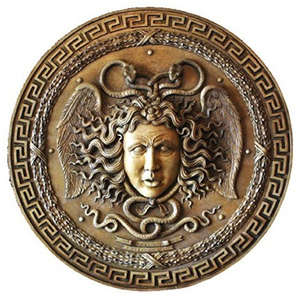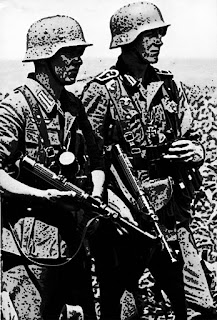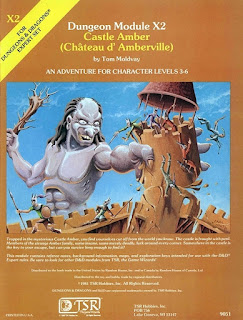Most fantasy roleplaying games hand out magic items like candy on Halloween. You have your +1 daggers, your potions of healing, and whatnot.
In Raiders every magic item is a mighty and ancient relic of unimaginable power! You don't just walk into a temple, slay some beasties, and loot their horde for a magical suit of +5 armor of aggrandizing. You go on an epic adventure to gather the clues, race against and face off with your rivals, overcome a perilous journey, to finally find the buried entrance lost ages ago. Then you dare to enter the trap filled tomb. After overcoming all these obstacles you find the object of your desire. A rare and precious artifact forged by an elder race long ago, perhaps touched with power from the gods or ancient
ancient technology beyond our reckoning. You emerge from the dusty catacombs, blinded by the noon day sun only to be confronted by your archenemy who takes the hard fought fruit of your labors, not to put in a museum, but to gain the power for himself. To threaten all mankind with this strange and unknown force.
The adventure continues until you finally outwit your opponent, or he is destroyed by his own lust and greed for power. You once again claim possession of the relic to give it to a museum where it can be studied and appreciated by everyone. Or perhaps some incompetent government bureaucracy then takes it and puts it away in some forgotten warehouse somewhere.
Raiders isn't filled with lists of nifty magic items. Instead it has a huge catalogue of real, and mythological-possibly-real items gathered from history and legend. Each of these is given enough of a story and description for the GM to use as a McGuffin in the adventure. But still rough enough around the edges that it can be fit into the GM's campaign without too much work.
Here is an example, one of my favorites from the book.
The Aegis

This was a form of magical armor born by the goddess Athena in Greek myth, and also sometimes carried by her father Zeus. It was symbol of military prowess and defense. Athena may have crafted the aegis from the hide of one of her monstrous foes, perhaps the giant Pallas, whom she killed in the war against the Giants. In form it could vary, but it was often worn wrapped around the wearer’s body, and also hanging down behind her as a cloak. It was said to have a surface like golden snake skin. After the Gorgon medusa was slain, Athena arranged to have its severed face integrated into the folds of the garment; when uncovered, the gorgon’s red eyes stared out from her chest and its writhing snake-hair hung like tassels, and its petrifying gaze could fall upon all who faced her. The Aegis could also be rearranged and attached as a cover to a stout shield (again with the gorgon-head facing outward); Zeus, if he used it, often preferred this form. It takes two rounds to change the Aegis’s form.
The aegis was sometimes leant by Athena to favored individuals such as mortal heroes, and perhaps it passed into one of their possessions after the gods left the earth (and hid whatever palace they had on Mount Olympus from mortal eyes). Should this be the case, it is possible it might be found in some ancient Greek hero’s tomb or temple, possibly one sacred to Athena, that in or around the Mediterranean region
As a garment, the Aegis provides AC -2 (22) to its wearer; as a shield cover it is a +4 shield (not cumulative with any bonus an existing magic or high-tech shield already provides, but if the shield is itself +4 or better, the combination provides a +5 bonus). In addition, when the medusa-head is uncovered anyone who is looking directly at it and comes within 50 feet must make a saving throw or be turned to stone (after making a saving throw, they are immune). When the Aegis is worn as a garment, anyone grappling its wearer may be stung by the live snakes; they collectively attack in close combat with 4 HD with a hit doing 1d4 damage and requiring a saving throw vs. poison to avoid death.
Even with its face covered, the aegis is also a potent symbol of power and victory; should a leader wear the aegis, any troops with him will have +2 to morale checks or saving throws made against fear, and the wearer or wielder of the aegis is themselves immune to fear.
Groups who might be seeking in the Aegis could include those archeologists or occultists who believe in the truth of Greek legends like the Illiad, as well as Greek nationalists and Hellenophiles (many of them British) who revere Athena as a symbol of justice and democracy. Political leaders who fear assassination may also wish to possess the aegis merely for its protective qualities, although its benefits to leadership would also help. Possible guardians for the Aegis include the usual array of mythical Greek monsters, and the danger of finding the thing uncovered and being turned to stone...

















